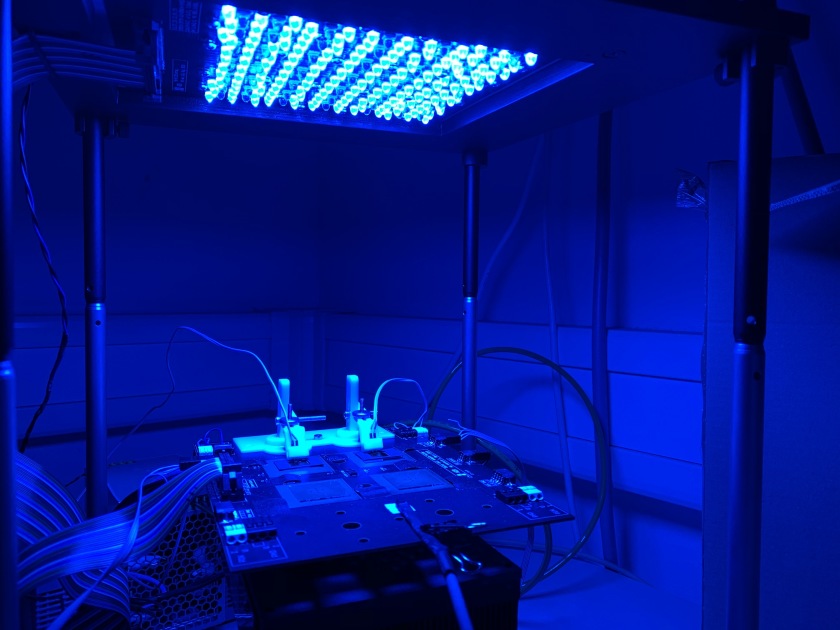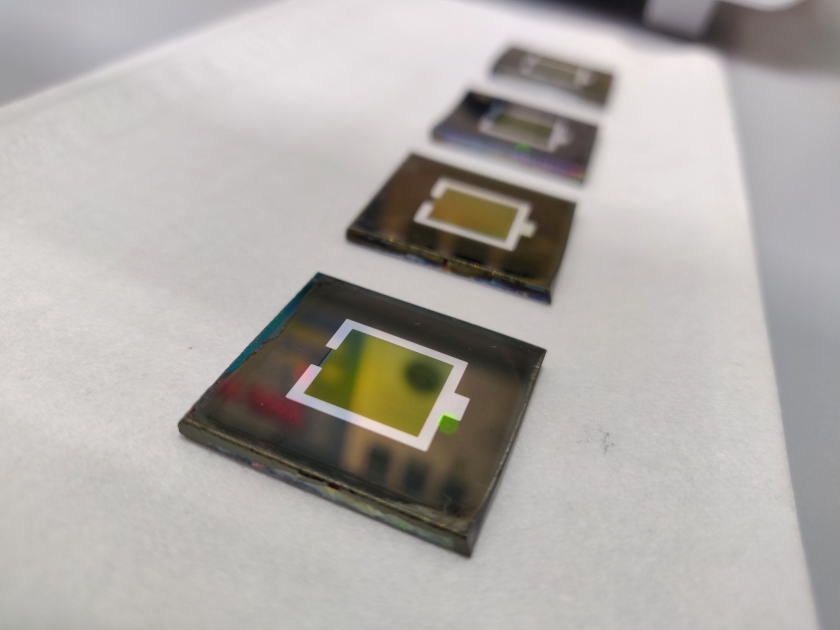Department Perovskite Tandem Solar Cells
Stability
Long-term stability is essential for perovskite-based solar cells to become competitive with current solar cell technologies. In addition to the continuous improvement of perovskite solar cells’ structural properties through device engineering (see Tailoring Perovskite Properties and Development of New Contact Materials), we are dedicated to the characterization of such devices under stress conditions:

Perovskite tandem solar cells are tested in a stability setup. Picture: E. Köhnen / HZB

Multiple Perovskite/CIGSe Tandem Solar Cells. Picture: A. Al-Ashouri / HZB
- We designed a long-term aging setup for perovskite tandem solar cells. We carefully control the illumination conditions to precisely control of the current densities generated in the subcells, to mimic the generation conditions under standard testing conditions of the tandem solar cells. The controlled measurement conditions allow to distinguish the impact of various stability improving modifications under the same conditions. Ultimately, AM1.5G conditions can be created but also other conditions such as highly mismatched cells etc. can be imitated.
- Nonetheless, sometimes factors such as spectral variation (clouds, time of the day, etc.) or environmental impacts (humidity, rain etc.) can cause different measurement conditions [1]. To study the influence of these factors on device performance, we collaborate with the Outdoor Performance Analysis Group for in-field tests to measure device performance in regular time intervals under real-world conditions while monitoring parameters such as ambient temperature, humidity and irradiance.
- In collaboration with the Group Silicon Heterojunction Solar Cells, we explore different encapsulation methods and materials for protecting the humidity-sensitive perovskite from outer influences. This involves tailoring of the perovskite composition to withstand certain conditions during the encapsulation procedure.
Key Publications:
- Jošt, M.; Lipovšek, B.; Glažar, B.; Al-Ashouri, A.; Brecl, K.; Matič, G.; Magomedov, A.; Getautis, V.; Topič, M.; Albrecht, S.: Perovskite Solar Cells go Outdoors: Field Testing and Temperature Effects on Energy Yield. Advanced Energy Materials 10 (2020), p. 2000454/1-11
doi:10.1002/aenm.202000454
Open Access Version
